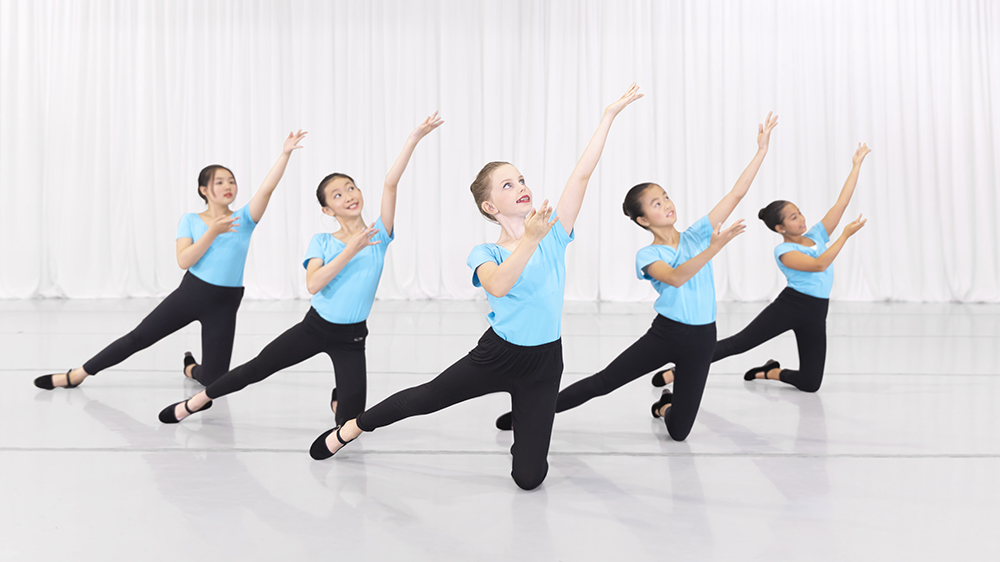



Chinese Dance Curriculum
Classical Chinese dance is one of the most comprehensive dance systems in the world. Students will master this exceptional classical art form while exploring China’s cultural heritage. Our systematic training in dance fundamentals, flexibility, technical skills, and the unique element of shen yun (or ‘bearing’), is well-known in the Bay Area. Middle School of the Arts students win numerous awards in national and world Chinese Dance competitions. Our Chinese Dance faculty are experienced dance instructors and graduates of renowned Chinese dance institutes with degrees in Classical Chinese Dance or Ethnic Dance.
- Dance Fundamentals I-IV
- Bearing and Form I-IV
- Tumbling
Dance Fundamentals teaches the building blocks of dance which include flexibility, posture, and strength. The students will learn the basic concepts and terminologies and develop a command of the fundamental techniques and dance movements. Students will train in the form of barre exercises, floor and center routines, and practicing technical skills. Establishing a solid foundation will enable students to perform the various techniques and movements of classical Chinese dance.
UC Approved: I-IV
Bearing, called “Shen Yun” (身韻) in Chinese, is one of the major components of classical Chinese dance. Bearing is a technique used for expressing specific inner feelings through form, or postures and movements in dance combinations and barre practice. Designed to train dancers to grasp the “feeling” or inner essence of Chinese dance, its system of routines emphasizes the coordination of breath, physical movement, and spirit, striking a balance between the physical and the spiritual.
UC Approved: I-IV UC Honors: IV
Tumbling skills are widely used in Classical Chinese Dance to enhance characterization and presentation. Students will train and learn to safely perform various acrobatic skills from entry-level, which include handstands, cartwheels, and walkovers, to advanced concepts such as aerial skills, flips, and combinations. This course relies on the students’ practice to develop the strength and technique necessary to execute the more challenging flips properly.
- Ethnic/Folk Dance
- Repertoire
- Flexibility
Chinese Ethnic/Folk Dances focus on learning the characteristics of the ethnic dances of the Chinese northeastern Yang Ge (秧歌) dance and the folk dances of the Han, Tibetan, and Mongolian ethnic groups. By developing a solid command of these folk dances’ moves and styles and learning the different bearing and rhythms, students can grasp the sincerity, humor, passion, values, and diversity that are demonstrated in these folk dances. The students will also learn to express through dance the belief that humankind is an integral part of nature – a belief widely held by many Eastern ethnicities and by the Chinese people in particular.
Students rehearse group dances with choreographers several times during the week. They learn proper spacing on a stage, different formations, various transitions, and train their expression. At the end of every school year, a dance recital is held.
Flexibility is the foundation of classical Chinese dance fundamentals. Without a high degree of mastery in flexibility, dancers cannot execute many basic movements much less the more advanced jumps and aerial techniques. Therefore flexibility is trained most intensely in the first few years of a dancer’s education.
